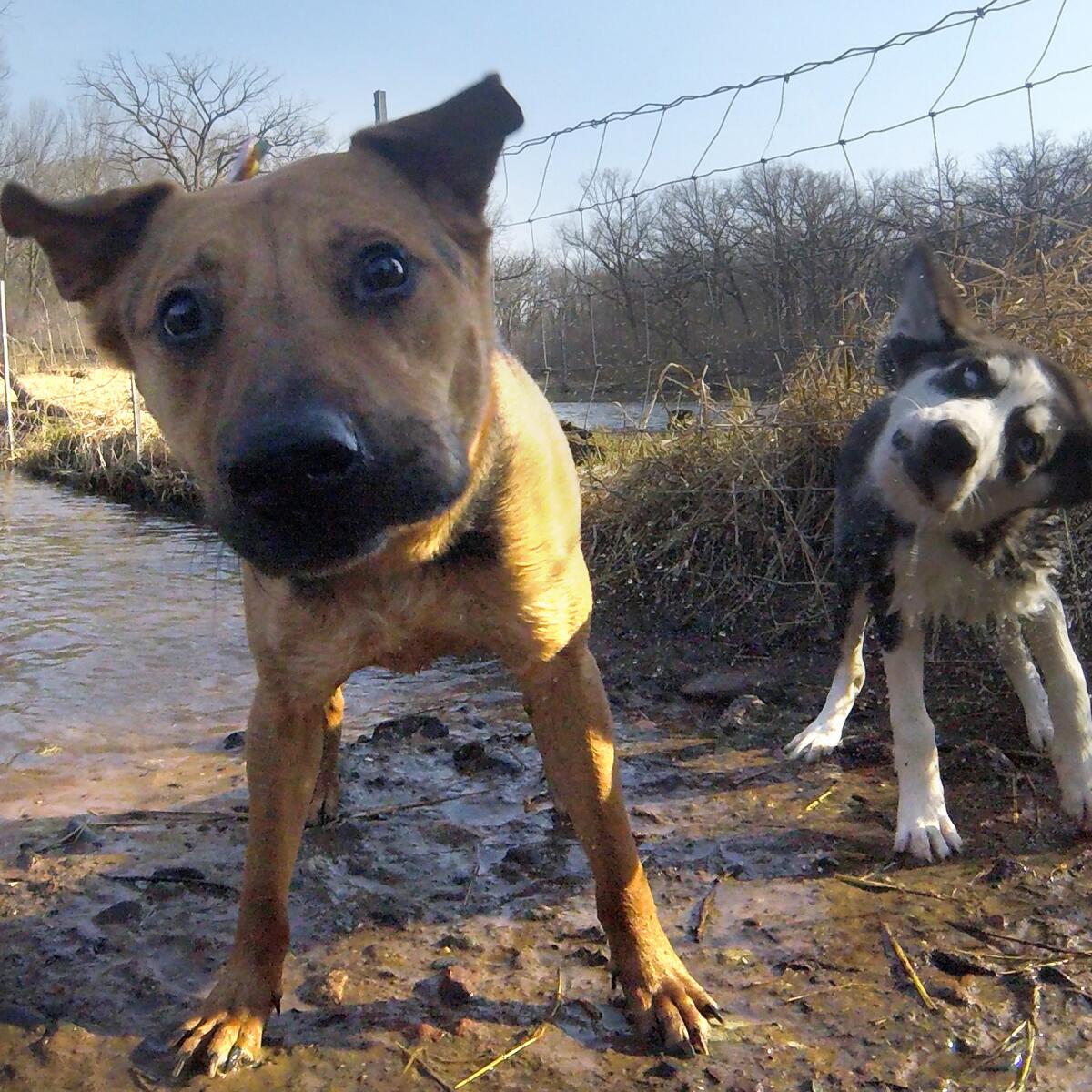Dogs are so great that humans domesticated them not once, but twice

A new study suggests that dogs were domesticated not once, but twice. Pictured here, an image from Tula, a dog who has been wearing a GoPro at Twin Cities dog parks.
- Share via
The domestication of dogs by humans was so inevitable, it may have happened more than once, according to a new study.
In a paper published Wednesday in the journal Science, a team of international researchers concludes that dogs were domesticated twice, by two different groups of people living thousands of miles apart.
The findings could put to rest a long-standing scientific disagreement between those who believe the animals were first domesticated in Europe and those who argue they were first domesticated in Asia.
“Maybe the reason there hasn’t yet been a consensus about where dogs were domesticated is because everyone has been a little bit right,” Greger Larson of the University of Oxford, the senior author on the paper, said in a statement.
See the most-read stories in Science this hour >>
The new work is based on genetic and archaeological evidence.
Thanks to a vast web of collaborators, the research team had access to DNA sequences from the remains of 59 ancient dogs that lived between 3,000 and 14,000 years ago, as well as the complete genome of a medium-sized dog that lived 4,800 years ago from a grave complex in Newgrange, Ireland.

University of Oxford researchers Greger Larson and Laurent Frantz discuss their new research that suggests dogs were domesticated by two different groups of humans living thousands of miles apart.
The team compared the prehistoric dogs’ DNA to genetic signatures of more than 2,500 previously studied modern dogs from around the world. Its analysis revealed a deep split between dogs from East Asia and those from Europe. However, the researchers also found that the two groups had a common ancestor sometime between 6,500 and 14,000 years ago.
The genetic study also found that this common ancestor probably originated in Asia.
But there is archaeological evidence that domesticated dogs were already living with humans in Europe well before the split.
“There were dogs in Europe before the common ancestor of all dogs in Europe and all dogs in the world,” said lead author Laurent Frantz of the University of Oxford.
Turning to the archaeological record, the team reports that there is concrete evidence of dogs in eastern Eurasia that dates back to 12,500 years ago. In Western Europe, there is evidence of dogs dating back to 15,000 years ago. However, in the middle of Eurasia, dogs don’t show up until about 8,000 years ago.
“Combined with our DNA analyses, this observation suggests two distinct populations of dogs were present in Eastern and Western Eurasia during the Paleolithic,” the authors write.
Based on the evidence presented in the paper, the team proposes a new narrative for the origin of dogs. They say that ancient people in Asia and in Western Europe came to the same conclusion more than 10,000 years ago: that wolves could be, and should be, domesticated. However, sometime between 6,400 and 14,000 years ago, dogs indigenous to Western Europe were partially replaced by an eastern dog population that had come westward alongside their humans.
The question of why these two groups of people living thousands of miles apart decided to domesticate dogs is still up for debate, but Larson suggests it may not be a coincidence.
He wonders if there were ecological, environmental or cultural changes in the way in which wolves and humans were interacting in both parts of the world that made the domestication of dogs more inevitable.
Regardless, it seems that the long-standing friendship between dog and man was certainly meant to be.
Do you love science? I do! Follow me @DeborahNetburn and “like” Los Angeles Times Science & Health on Facebook.
MORE FROM SCIENCE
Why male fruit flies have such enormous sperm
How the surface of Pluto got its peculiar polygonal shapes
Meet some amazing animals and plants that are new to science



